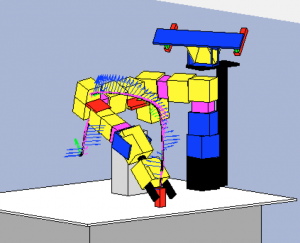Movement generation in robotics is a well know problem with many excellent solutions. Most of them, however, look for optimal solutions according to some metrics, but have no biological inspiration. From a human perspective these techniques behave in a non-naturalistic way. This poses a problem for human-robot interaction and, in general, for a good acceptance of robots in society. The present work presents a new analysis of the attractor dynamics approach to movement generation used in an anthropomorphic robot arm. Our analysis points to the possibility of using this approach to generate human-like arm trajectories in robots. We compare the theoretical results with the experimental data taken from human reaching trajectories. The key property of trajectories generated by humans is the planarity, which, according to our analysis’ results, could be reproduced with the attractor dynamics approach.
solutions. Most of them, however, look for optimal solutions according to some metrics, but have no biological inspiration. From a human perspective these techniques behave in a non-naturalistic way. This poses a problem for human-robot interaction and, in general, for a good acceptance of robots in society. The present work presents a new analysis of the attractor dynamics approach to movement generation used in an anthropomorphic robot arm. Our analysis points to the possibility of using this approach to generate human-like arm trajectories in robots. We compare the theoretical results with the experimental data taken from human reaching trajectories. The key property of trajectories generated by humans is the planarity, which, according to our analysis’ results, could be reproduced with the attractor dynamics approach.
